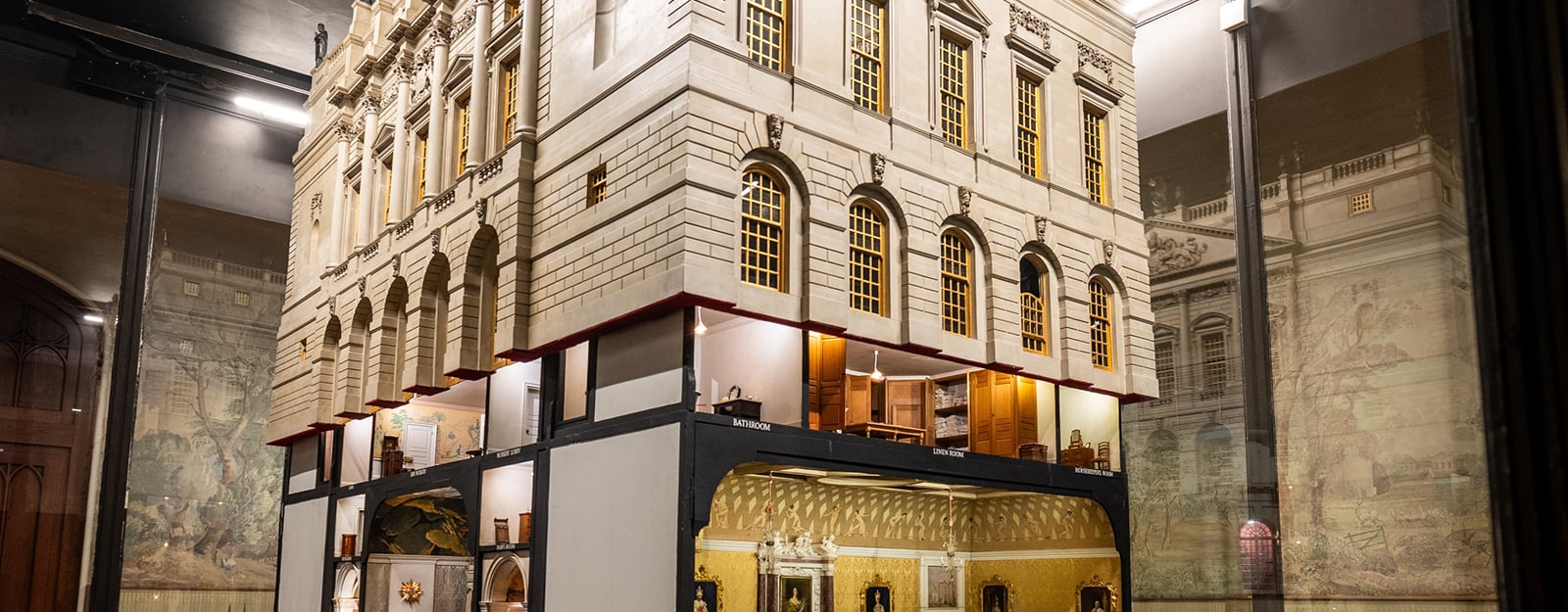
Queen Mary's Dolls' House
A guide to Windsor Castle's famous Dolls’ House.
Prints and Paintings
The Doll’s’ House contains a variety of miniature drawings, watercolours, prints and paintings. While some pieces were intended to decorate the walls, others were to be laid flat and stored in two cabinets in the library and drawers in the basement.
To obtain the art collection, Princess Marie Louise contacted 700 notable artists of the day, asking them to donate drawings, watercolours, sketches, etchings, lino prints and engravings. The received artworks covered a vast range of subjects and styles. Today those not on the walls are kept in the Print Room at Windsor Castle.
One unfortunate absence is a self-portrait by Charlie Chaplin. In 1921 Chaplin promised to donate a miniature portrait of himself but the offered artwork never appeared.
Paintings are not limited to those on miniature canvas. In many of the rooms, ceilings and walls are adorned with murals. Edmund Dulac painted chinoiserie fairy tales on the walls of the Day Nursery and the ceiling of the King's Wardrobe shows female nudes painted by Wilfrid de Glehn.
Portfolios in the Library
The Dolls’ House library includes a pair of cabinets designed to contain portfolios. The artists who created pieces for these were restricted to producing works measuring 3.8 by 2.5 cm (1 ½ in. by 1 in.). These would be fixed to uniform mounts before being placed in the portfolios.
The collection of 774 miniature works on paper represents a panoramic snapshot of British art in the 1920s. The subjects chosen by the artists were wide-ranging. Inspired by the Dolls’ House setting, many chose whimsical or fairy tale subjects. There are many watercolours of landscapes within the British Isles, and others of far-flung locations. Portrait submissions included several of royal family members. Other contributions reflected sombrely on the First World War.
Most of the works produced for the Dolls’ House reflect the traditional values and tastes that a visitor would expect to encounter. However, new ideas and contemporary social trends can perhaps be read in the content of others.
Around 140 works focus on women or girls as subject matter (of which 30 or so were produced by women). Several allude to the changing role of women after the First World War, their altered social standing and a degree of hard-won freedom.
Explore some of the miniature objects below:







